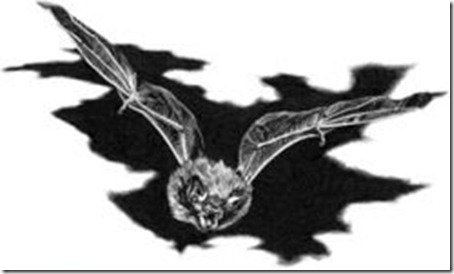
#5. Manananggal
Unlike the other Pilipino mythical creature the Aswang, a combination of a vampire and a witch, the Manananggal appears in the form of a beautiful older woman, except for the fact that she has leathery wings and detaches her torso from her bottom half at night. This mythical creature's name comes from that very behavior: in Tagalog, tangal means "to separate"; Manananggal then means "one who separates itself."
When a manananggal separates itself, its torso flies in search of prey while its lower half stays where it is. Its victims are usually unsuspecting pregnant women who are about to give birth or are at home: using an elongated tongue, similar to an elephant's trunk, the Manananggal sucks the hearts of fetuses or the blood from its victims. When the fetus is born, its face or bodies tend to be deformed.

#4. Tikbalang
The Tikbalang creature is demi-human, half-horse, half human. Its lower torso is part horse and the upper is human, its like a centaur, but more scary type as its eyes are red, and is said to carry an axe(palakol in local dialect) everywhere it goes.
Tikbalang nests in the forests of the Philippines, and is said that it would astray a traveler's way, making it go back to the same place over and over again. The Tikbalang's spell can be undone by turning your shirt inside-out or saying "padaan po or tabi po" meaning excuse me may I pass.

#3. Tiyanak
You hear the voice of a crying child. Naturally, you check to see what is wrong. As you turn to look at the precious newborn, you are actually met with a horrifying beast, with sharp claws and a vicious bite. You have just encountered the Pilipino mythical creature known as the Tiyanak
Several regions of the Philippines have their own stories behind the origin of the Tiyanak. The most simple theory states that the Tiyanak is merely an imp or demon from creation. Those from the Mandaya and Mindanao regions suggest that the Tiyanak is the spirit of a child whose mother died before giving birth. In other regions it is believed the Tiyanak is the spirit of a infant who died before being baptized. Another theory describes the Tiyanak as the soul of an aborted infant seeking revenge on those who deprived him of his life

#2. Mangkukulam
Mangkukulam, also known as bruha or bruho, are similar to witches. Each Mangkukulam has unique abilities that they use to manipulate the personal affairs of other people. A Mangkukulam’s powers are passed down from one generation to another; at least one person in the family will inherit the craft.
Mangkukulam create spells and potions to harm their enemies or people who have wronged them. One of the ways they do this is by making a manyika, or doll, in the likeness of their victim, the kinukulam. The Mangkukulam collect hair or personal items, such as clothing, from their victims and put them on the doll. They use needles to prick different parts of the doll, twist and break its limbs, or even burn or boil the doll. The doll acts as a conduit of pain, transferring the actions performed on the doll onto the victim’s body. People who have an unexplained pain or illness worry about the possibility that they have been cursed by a Mangkukulam. Some symptoms include feeling weak or sick despite the use of conventional medicines. Instead, they should seek the help of an albularyo, or herbal doctor, for treatment.

#1. Aswang
The aswang is an evil vampire-like, shape-shifting ghoul that is the subject of a wide variety of myths and stories, whose details vary greatly. Spanish colonizers noted that the aswang was the most feared among the mythical creatures of the Philippines, even back in the 16th century.
The myth of the aswang is well known throughout the Philippines, and is especially popular in the Western Visayan regions such as Capiz, Iloilo and Antique. The trademark feature of aswangs which distinguish them from other Pilipino mythological creatures is their tendency to replace stolen cadavers with the trunk of a banana plant that has been carved in the cadaver's likeness. They are also said to like to eat small children. Their favorite body parts are the liver and heart, and are known to be viscera suckers. Other regional names for the aswang include "tik-tik", "wak-wak" and "soc-soc"